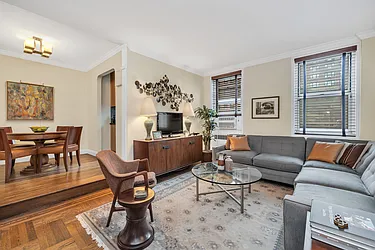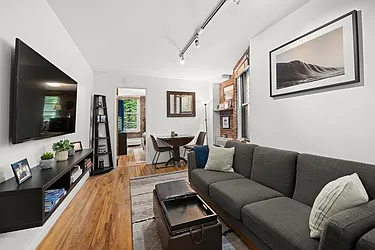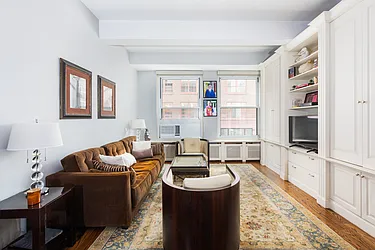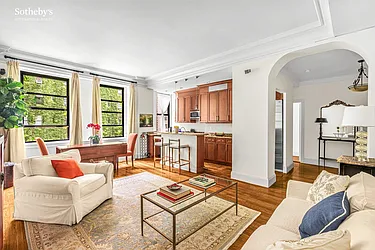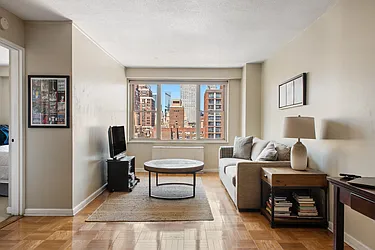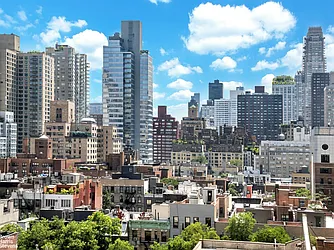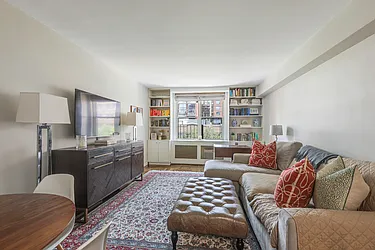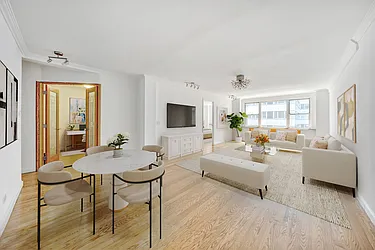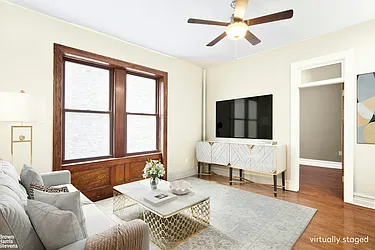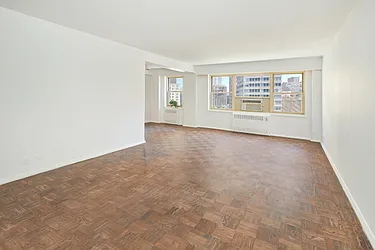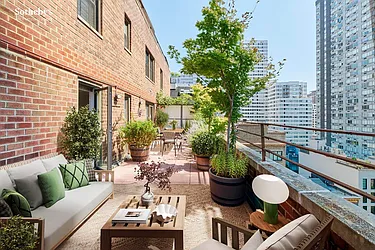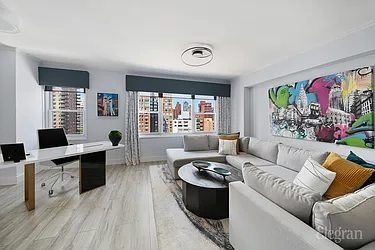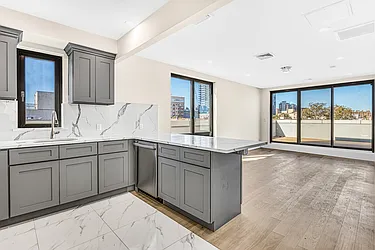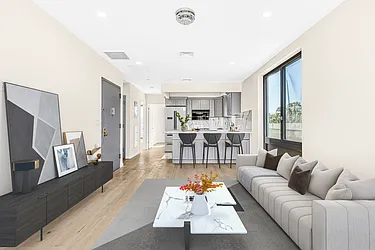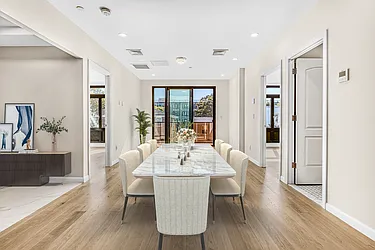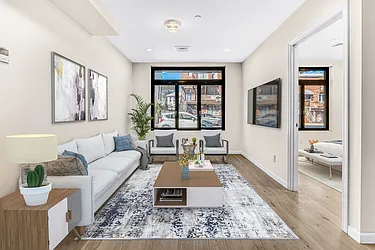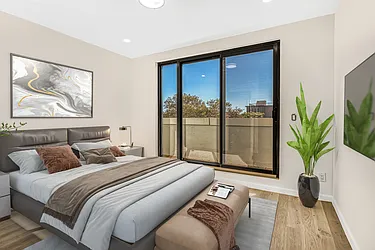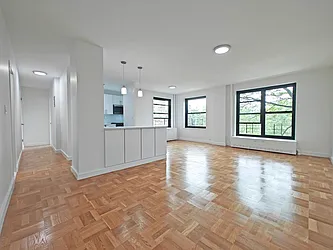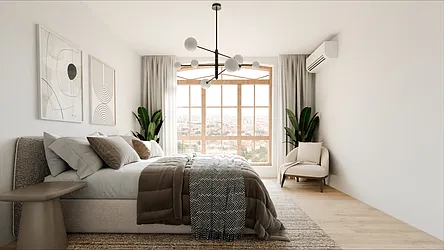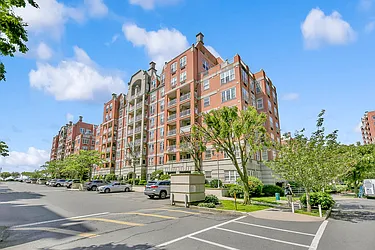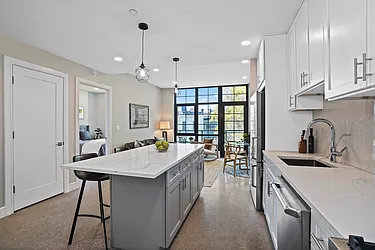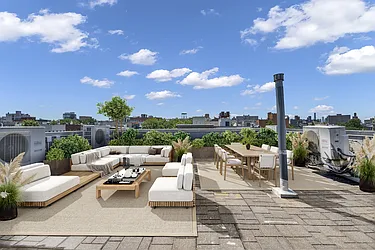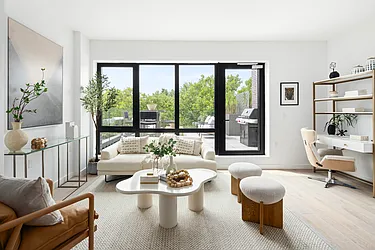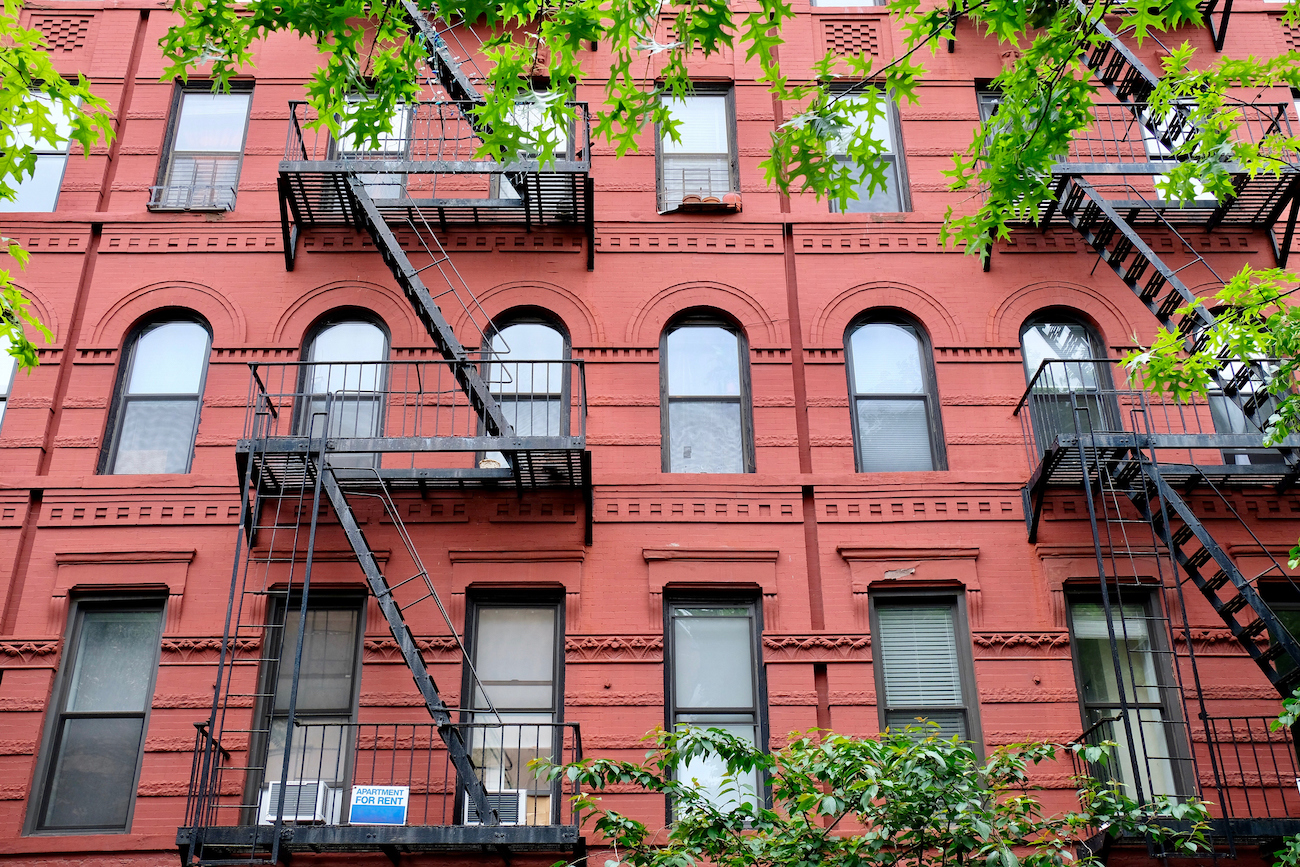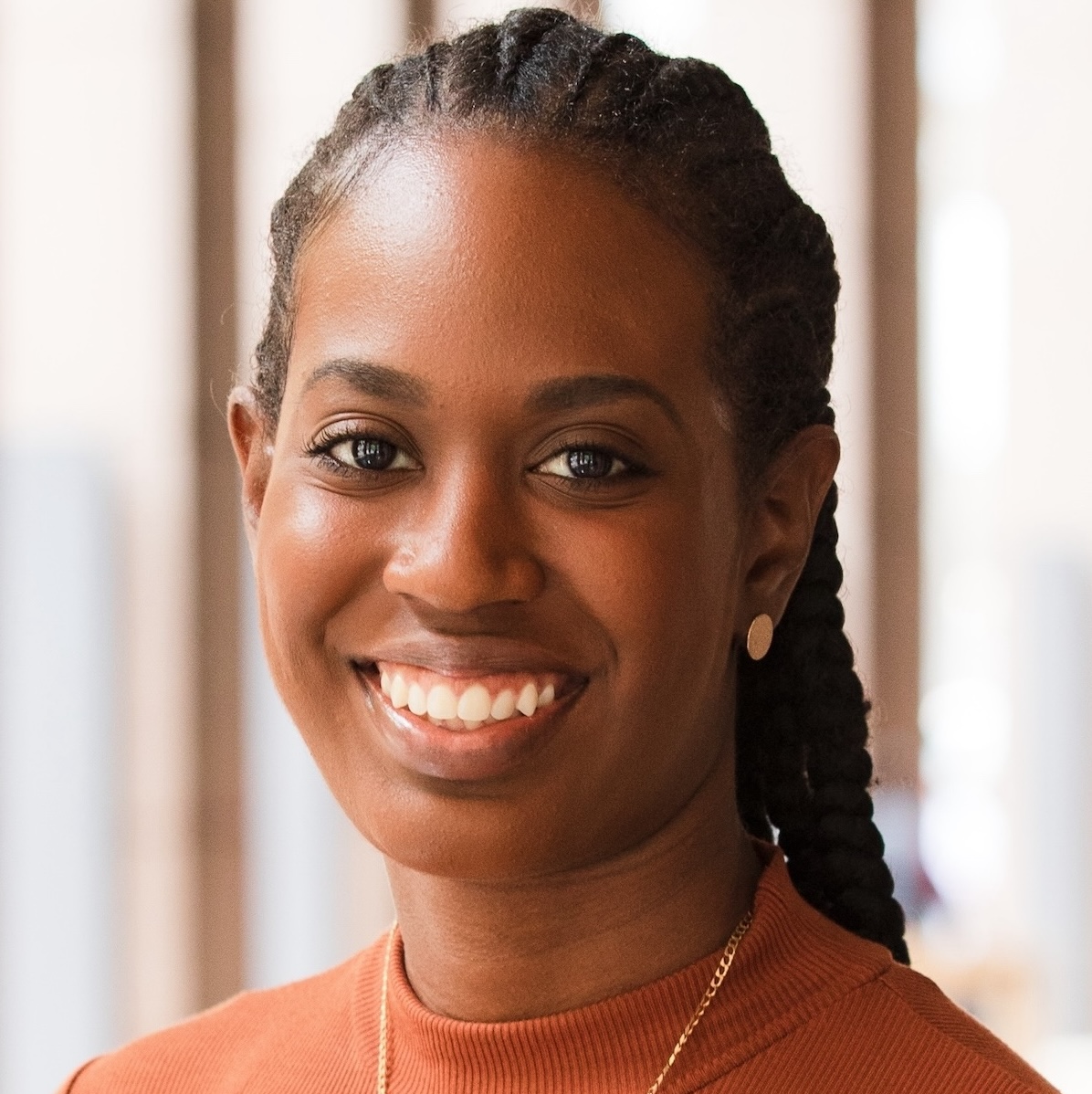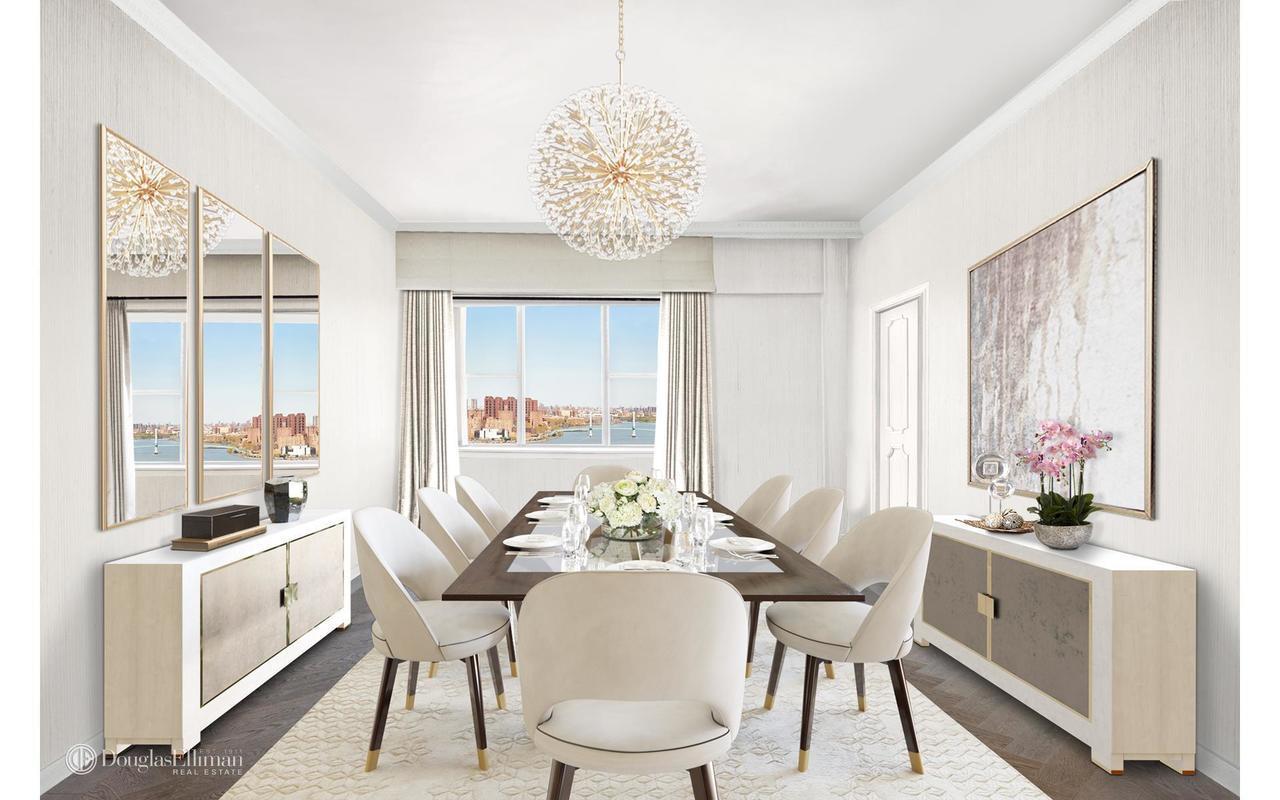
A digitally staged image from 535 E. 86th St. #PHC, listed by Carol Staab of Douglas Elliman.
Staging a home that’s for sale can increase property values between one and five percent, according to a National Association of Realtors survey. The technique sweetens listing photos for consumers, particularly since 83 percent of U.S. buyers use staging to visualize what life would be like in a new home.
But physical stagings can cost thousands of dollars — for local sellers they can run tens or even hundreds of thousands, says Ilaria Barion of Ilaria Barion Design, which specializes in virtual staging for luxury homes — not to mention weeks spent waiting for furniture orders and the grueling labor of moving it all.
So it’s no surprise that virtual staging now dominates the New York City real estate market. Virtual staging allows designers like Barion to digitally place furniture and accessories in photos of empty or outdated apartments, and it generally takes about two weeks at most.
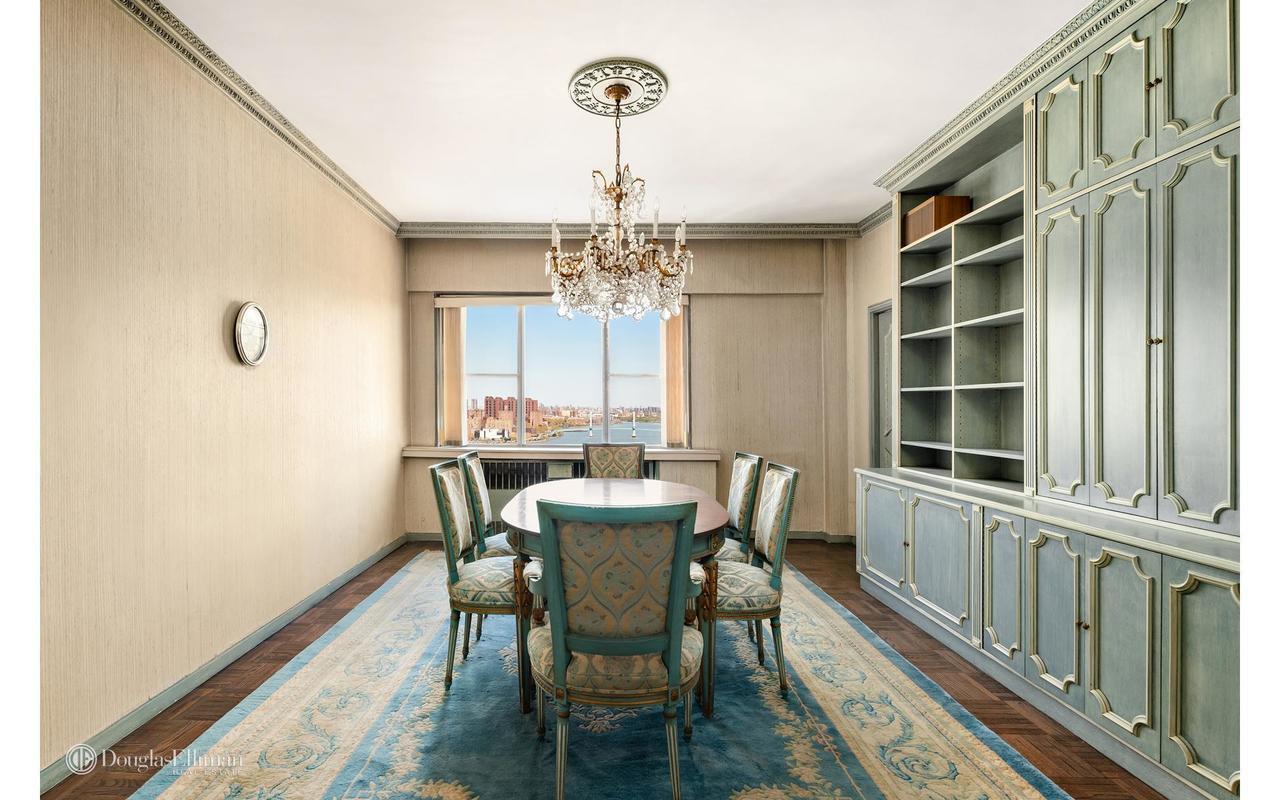
The original image of the virtually staged dining room above.
Virtual staging in the NYC market can be traced back to around 2008, Barion says. As the economic crisis hit, this significantly cheaper staging option gained traction. Though the process demands hours of labor across several software platforms, it still far outpaces the old-fashioned method, and unlike with physical staging, the agent covers all virtual staging costs — brokerages commonly allocate part of their marketing budgets to it.
This comes as a welcome relief to sellers on a budget, of course. But surprisingly, clients with multimillion-dollar properties often reject physical staging in favor of the cheaper and quicker virtual option, too, says Douglas Elliman agent Carol Staab.
As the self-described “queen” of virtual staging, Staab adopted the practice in 2010 and says that nearly all of her current listings include such renderings. She has represented estate apartments that require major updates, which are much more easily visualized using design software. “If you can’t do the very best physical staging, do the best luxury virtual,” she says.
Manhattan 1-2BRs Under $1M Article continues below
Beyond its logistical advantages, virtual staging also allows for greater design freedom: “You can do anything you want,” Barion says. “No one is going to move a baby grand piano or a pool table into a home doing physical staging.”
NYC luxury brokerages might pay Barion’s company at least $200 per photo, according to the design firm’s website. More work-intensive services, like virtual furniture replacement, drive up final prices: A four-bedroom package with such modifications could cost the listing agents up to $1,432.
Companies on the lower end typically charge between about $15 and $60 per photo. The final product’s quality varies by company, Barion says. Luxury-oriented buyers and renters typically expect high quality and practically indistinguishable renderings.
Brooklyn 1-2BRs Under $1M Article continues below
As the quality of digital renderings improves, though, the ability to distinguish technologically enhanced photos from reality becomes more complicated.
The National Association of Realtors’ code of ethics demands that agents accurately represent listings, but virtual photos are not always clearly labeled as such. Agents usually add text to a bottom corner of photos, include a note in the listing description, or place original and edited photos side-by-side — but not always. It can be a difficult balance to strike: “It’s a whole can of worms. You don’t want someone to be distracted,” Staab says.
In the future, the majority of New York City listings may include virtual renderings, Staab says: “I think it’s going in the direction of replacing physical staging.”
—
Inspired to find your next place in New York? Whether you’re looking to rent or to buy, search NYC apartments on StreetEasy.

